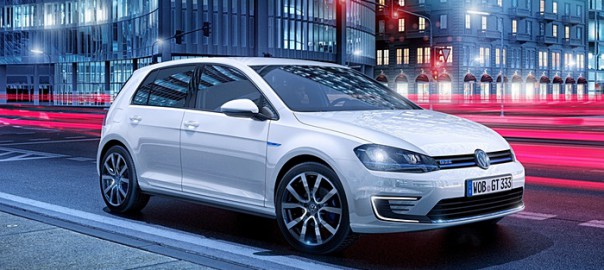Volkswagen’s new electric hybrid Golf is as green as they come, but can VW ever clean up its ruined reputation?

After the scandals in sport, food and banking (doping, horse meat, Libor and the rest), only a fool would have bet against the motor industry not cheating the system, too. But no one would have fingered Volkswagen as the culprit. A byword for trust and decency for more than 75 years and the jewel of the German automotive industry, all reduced to lousy tricksters in the space of a single afternoon. That old adage that a good name takes a lifetime to win and a moment to lose has never been more true.
It was ironic, for me at least, that the day Michael Horn, VW’s US boss, stood up and said: “We’ve screwed up!” was also the day I found myself at the wheel of the new Golf GTE. The E in the title stands for Electric, while the GT is for Gran Turismo and tells new customers (and God knows they’re going to need them) that this isn’t just some dull electric buggy affair (a golf buggy!) but a full-on driver’s car that shares the same sporting DNA as the brand’s most famous performance badge – the GTi. It’s certainly a tricky balancing act for this VW to pull off as the car has to be both parsimonious and powerful. A sort of vegan Tarzan.
The car is a plug-in hybrid with both a 1.4 TSI petrol (no diesel here) and a snappy electric engine. It has five operating modes: pure electric, electric plus, battery hold, battery charge and auto hybrid. VW has made the technology that controls each option incredibly straightforward, but like many others, I suspect, after fiddling about with the various settings, I clicked on auto hybrid and let the car sort itself out. It seemed to know what it was about far better than me, anyway. Whichever mode you select the car always pulls away in pure electric and it takes a while to get used to that sudden, silent lurch.
All the extra gubbins associated with two engines and a large battery mean that the car is 300kg heavier than the standard model. That’s like driving everywhere with the Fijian rugby team’s front row sitting in the back. Despite all that heft the car still feels quick and agile around the park (rather like the Fijians themselves) which is testament to the raw power of the GTE. It does 0-62mph in 7.6 seconds with a top speed of 138mph.
Inside and out the car is almost identical to every other Golf on the road. One of VW’s e-mobility taglines is “The future is familiar” – and the GTE is certainly that. Within minutes of taking the wheel you feel completely at home. It’s one of VW’s great strengths that its cars can be totally fresh and yet familiar all at the same time.
Being a hybrid, the car’s eco credentials are clearly what sets it apart. It has a range of 31 miles using its fully charged electric engine alone (and most daily journeys are a lot less than that), and it will do up 580 miles on a single tank if both systems are engaged. VW claims an average of 166mpg (depending on how you drive, of course) with emissions of just 39g of CO2 per km. But, and a BUT could not be BIGGER, what’s the point of it?
How could one arm of VW be producing such a clever, clean machine while its other has sold more than 11m motors that knock out anything up to 40 times the pollution they claim? I fear that VW’s so-called “defeat device” will defeat a lot more than it was intended to.
Source: The Guardian
